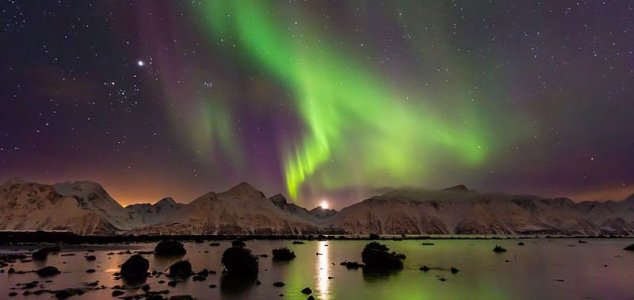New type of aurora borealis discovered
Posted on Wednesday, 29 January, 2020

There is still much we don't know about the aurora. (file photo) Image Credit: CC BY 2.0 Carsten Frenzl
A group of amateur stargazers has identified an entirely new form of aurora that looks a bit like sand dunes.
Also known as the northern lights, the aurora borealis - a spectacular light show that appears in the sky in the northern hemisphere - has fascinated mankind since the dawn of time.
Its colorful swirls and patterns are produced when charged particles from the sun accelerate along the field lines of Earth's magnetic field and interact with the gas atoms in its atmosphere.
Given how commonly viewed this phenomenon is, you would be forgiven for thinking that we have seen every possible variation there is to see, but now a team of amateur stargazers - along with the help of physicist Minna Palmroth - have succeeded in discovering a whole new type of aurora that has a pattern resembling sand dunes.
The discovery happened when Palmroth was invited to a Facebook group of aurora enthusiasts who had captured photographs of the new phenomenon.
The pattern, she believes, may be down to gravity wave disturbances in the atmosphere which are not dissimilar to the ripples you might see when throwing a stone into a pond.
"[The waves] have different frequencies, different wavelengths, different amplitudes and [so] to observe something very even, like the dunes, means that there has to be some active mechanism which is making them so even," she said.
Source: The Guardian |
https://www.unexplained-mysteries.com/news/334190/new-type-of-aurora-borealis-discovered
Thanks to: https://www.unexplained-mysteries.com
Posted on Wednesday, 29 January, 2020

There is still much we don't know about the aurora. (file photo) Image Credit: CC BY 2.0 Carsten Frenzl
A group of amateur stargazers has identified an entirely new form of aurora that looks a bit like sand dunes.
Also known as the northern lights, the aurora borealis - a spectacular light show that appears in the sky in the northern hemisphere - has fascinated mankind since the dawn of time.
Its colorful swirls and patterns are produced when charged particles from the sun accelerate along the field lines of Earth's magnetic field and interact with the gas atoms in its atmosphere.
Given how commonly viewed this phenomenon is, you would be forgiven for thinking that we have seen every possible variation there is to see, but now a team of amateur stargazers - along with the help of physicist Minna Palmroth - have succeeded in discovering a whole new type of aurora that has a pattern resembling sand dunes.
The discovery happened when Palmroth was invited to a Facebook group of aurora enthusiasts who had captured photographs of the new phenomenon.
The pattern, she believes, may be down to gravity wave disturbances in the atmosphere which are not dissimilar to the ripples you might see when throwing a stone into a pond.
"[The waves] have different frequencies, different wavelengths, different amplitudes and [so] to observe something very even, like the dunes, means that there has to be some active mechanism which is making them so even," she said.
https://www.unexplained-mysteries.com/news/334190/new-type-of-aurora-borealis-discovered
Thanks to: https://www.unexplained-mysteries.com






 Sat Mar 23, 2024 11:33 pm by globalturbo
Sat Mar 23, 2024 11:33 pm by globalturbo

